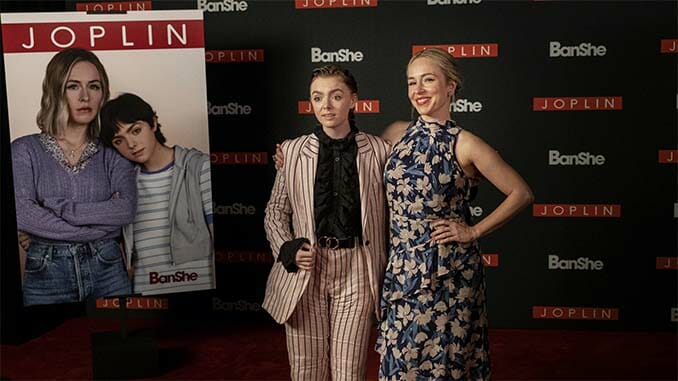Barry‘s Sharp Satirization of Hollywood Highlights Exactly What’s Wrong with the Streaming Era
Photo Courtesy of HBO
Barry’s frequent lampooning of Hollywood has always been one of the Emmy-winning comedy’s greatest assets. But in the HBO series’ third season, it’s almost too good, too real.
This season, Sally (Sarah Goldberg) has seemingly achieved her dreams. She’s filming Joplin, a streaming series she created, wrote, and stars in that is based on events from her life. We’re treated to the ins and outs of the experience, from meetings with distracted executives and long, stressful shoots to awkward press junkets and exhilarating premieres. It’s the type of storyline that pays off on Sally’s ambition, and easily connects with audiences who recognize the immense pressure she is under. But like the rest of Barry, it’s also deeply—and sometimes unexpectedly—funny, like when Sally is asked about abuse, a serious topic her show deftly tackles, during a press junket and then is immediately questioned about who should be the next Spider-Man (a storyline inspired by something that happened to star and co-creator Bill Hader. Sally chooses Ben Mendelsohn, by the way). But it’s when the show uses Sally’s story to take not-so-subtle jabs at streaming services like Netflix and the TV industry at large that its Hollywood arc reaches new—and unfortunately all too real—heights.
In the fifth episode, “crazytimesh*tshow,” Joplin launches on the fictional streaming service BanShe. Just 12 hours later, though, the show—which has a score of 98 on Rotten Tomatoes—is kicked off the homepage and barely searchable in the streamer’s database. The company tells Sally it’s canceling the show because “the algorithm felt it wasn’t hitting the right taste clusters.” Meanwhile, a similar series that has received exceptionally poor reviews, is popular because it is hitting all the right “verticals.” It is a perfect distillation of the current state of TV and the mysterious metrics that reign supreme and determine what’s renewed and what’s canceled in a viewing environment unreliant on ad sales and in which the ratings system of old no longer applies.
In the near decade since Netflix debuted its first original program and kicked off the Streaming Era, the TV industry has become reliant on technology and data to such an extent that it’s near impossible to uncouple them from the art that’s being made. While Nielsen knew what certain viewers with their boxes were watching and when, we’ve given streaming services like Netflix, Apple TV+, Hulu, and HBO Max full access to our viewing habits and interests, and they, in turn, have used them to discern any number of things about us and about TV in general, including which shows are watched the most and where they’re most popular, but also what scenes people have watched over and over again, the exact moment someone bailed on an show, and what thumbnail images are clicked on the most. When Barry turns its sharp wit and well-trained eye toward algorithms making decisions instead of the people in the room, it falls under the “it’s funny because it’s true” banner, but it also gives voice to a nagging thought: that the art—what’s happening on screen—doesn’t even matter in the end.
-

-

-

-

-

-

-

-

-

-

-

-

-

-

-

-

-

-

-

-

-

-

-

-

-

-

-

-

-

-

-

-

-

-

-

-

-

-

-

-








































